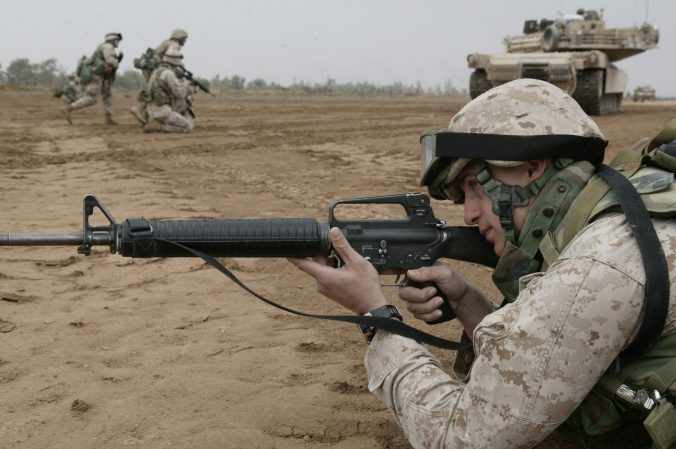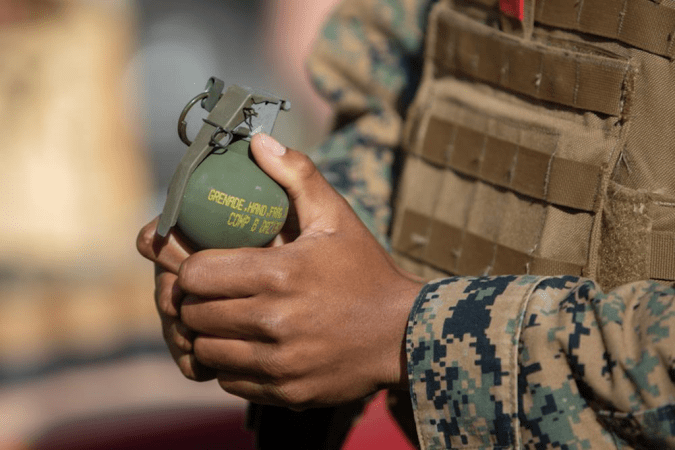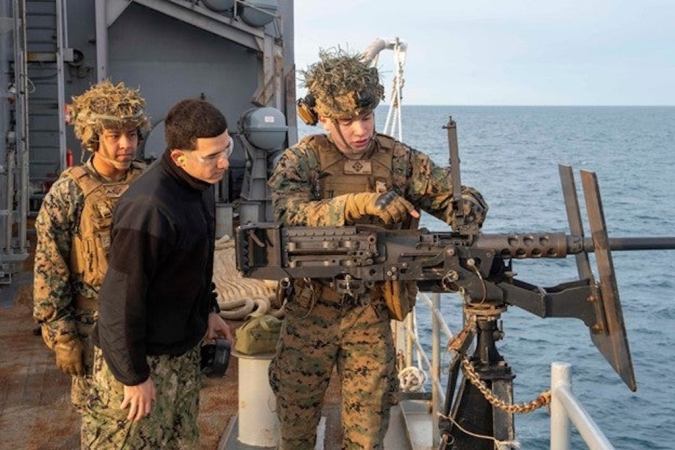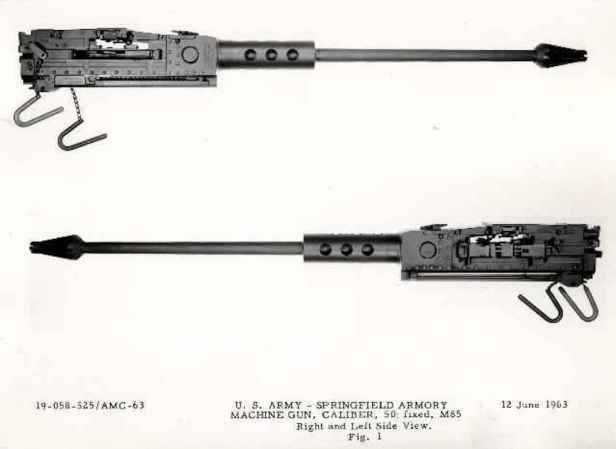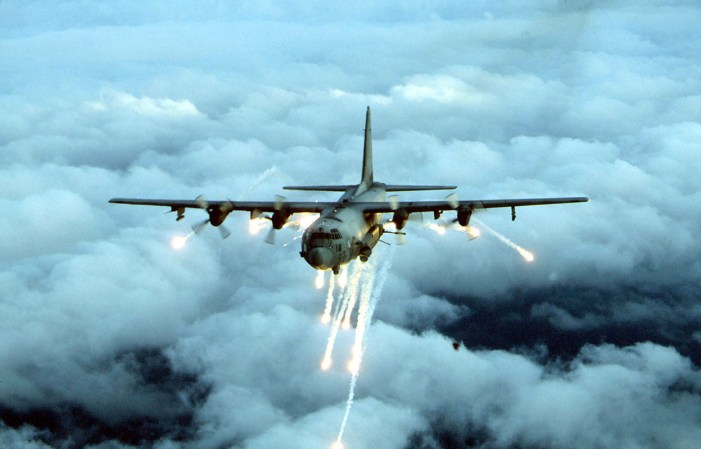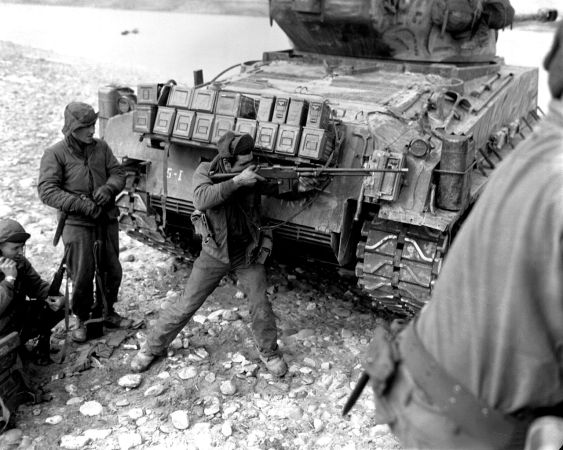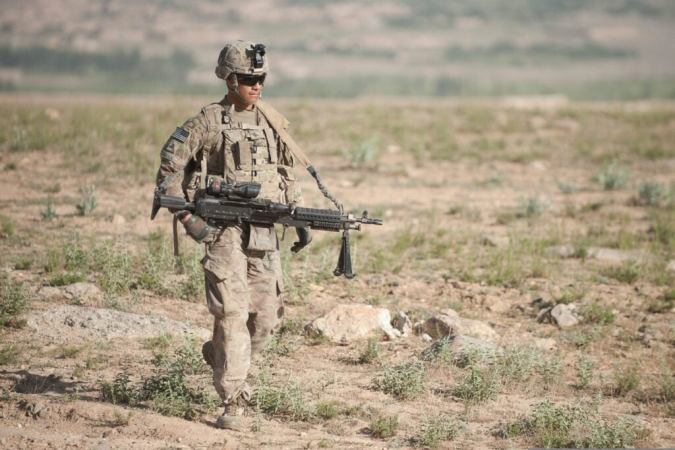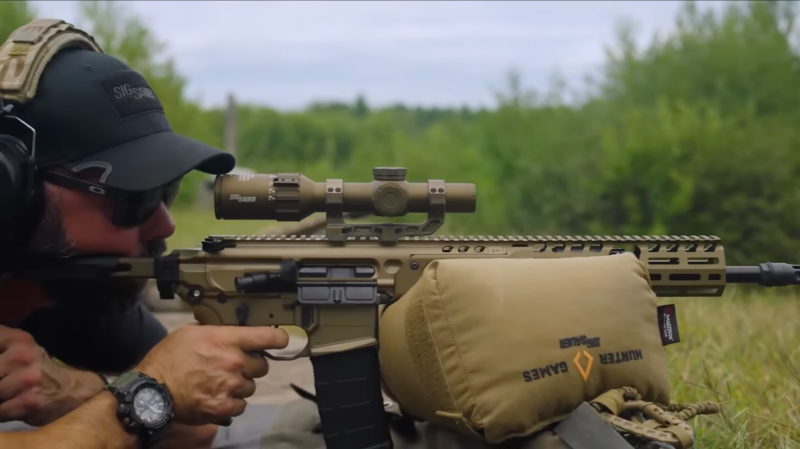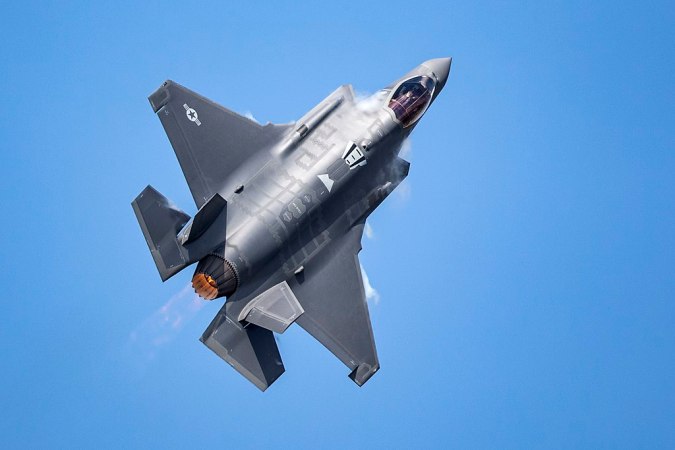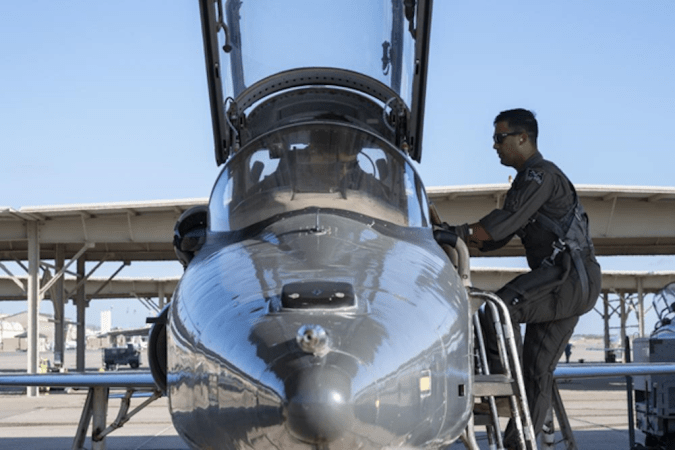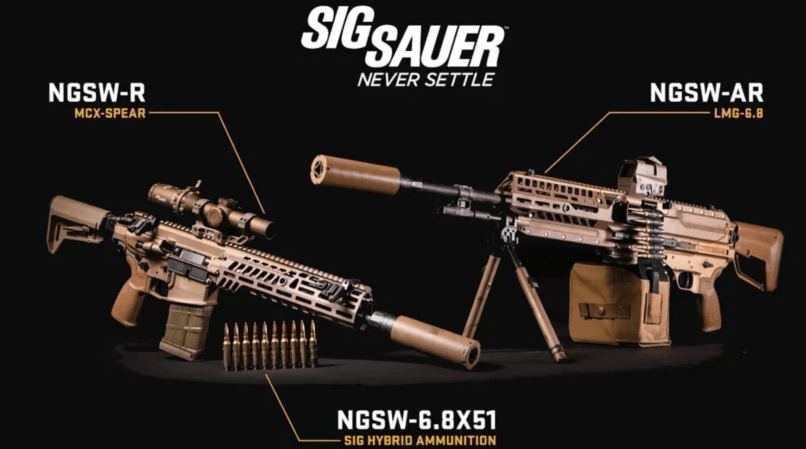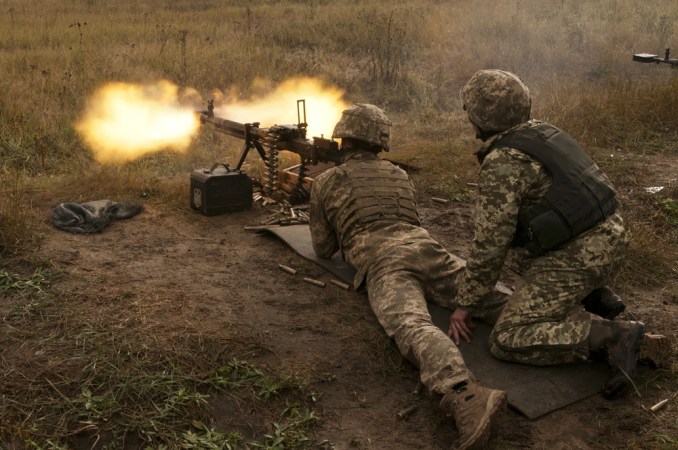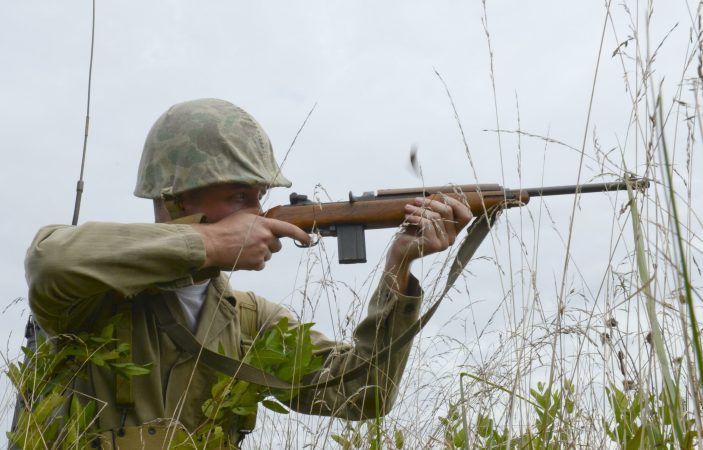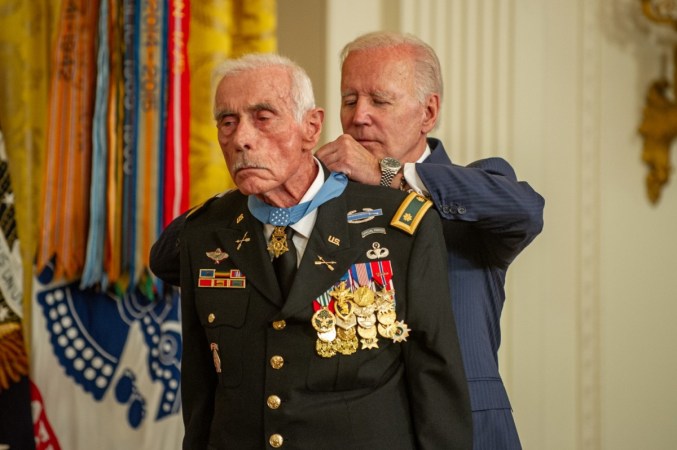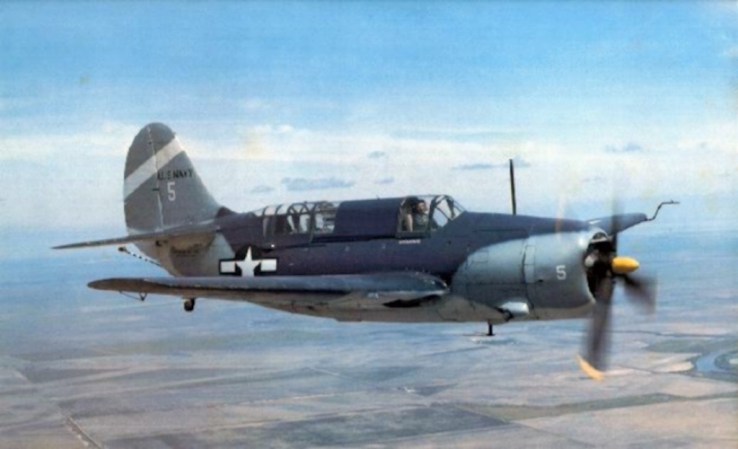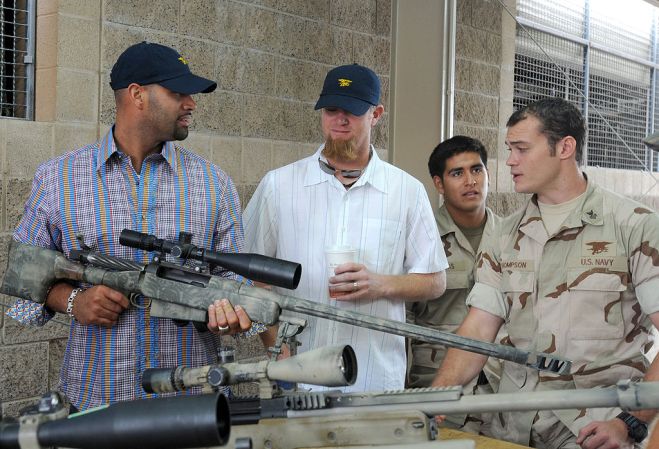Just a few feet away from the Vietnam Veterans Memorial Wall in Washington, D.C., is a life-size statue called “Three Soldiers.”
Crafted in bronze by sculptor Frederick Hart, he portrayed the men garbed in uniforms representative of the U.S. Army and U.S. Marine Corps, carrying weapons of the Vietnam War era and facing the memorial wall. The man on the left, his body draped with ammo belts, carries an M-60 general purpose machine gun.

Other than the M-16 rifle, perhaps no other firearm is as closely associated with the Vietnam War as the M-60. Portrayals of the M-60 in the hands of Vietnam War soldiers range from the sublime dignity expressed by the “Three Soldiers” statue to the over-the-top destruction of the fictional town of Hope, Washington, by Sylvester Stallone’s character, John Rambo, in the film “First Blood.”
The M-60 is a weapon that has faithfully served American soldiers in many battles since 1957. Far from perfect, the early model of the M-60 had so many design flaws that soldiers jerry-rigged fixes using everything from wire coat hangers to empty C-ration cans. The M-60 is also heavy — the machine gun weighs about 23 pounds, and those belts of ammo aren’t exactly lightweight, either.
No wonder the M-60 earned an unflattering nickname: The Pig.
But one thing is certain. Even with its flaws, a soldier armed with an M-60 can lay down a lot of lead, whether he is fighting in the jungles of Southeast Asia or the badlands of Afghanistan.

The M-60 is an air-cooled, disintegrating belt-fed, gas-operated general purpose machine gun. It fires the 7.62 mm round with a cyclic rate of about 550 rounds a minute — a rate of fire that requires the crew to change the M-60’s barrel about every minute. In addition, the M-60 has an integral, folding bi-pod, but it can also be mounted on a folding tripod.
The M-60 was — and is — a fixture in the U.S. armed forces, serving as a squad support weapon, vehicle-mounted machine gun and as a “flex gun” mounted in the doors of helicopters like the UH-1 Huey and the CH-47 Chinook.
Development of the M-60 started after World War II. American generals held a grudging admiration for the German MG-42, a machine gun so powerful that it was nicknamed “Hitler’s Bone Saw” by the Wehrmacht troops that fired it. The MG-42 had a blinding rate of fire and was belt fed—both qualities were considered desirable by weapons designers. The Fallschirmjägergewehr 42, or FG 42 battle rifle, also had equally desirable qualities, such as a gas-operated bolt, which were closely scrutinized by the Americans.
Ordnance experts took the best Germany had to offer and developed a prototype machine gun. Some argued it wasn’t an ideal machine gun compared to foreign models such as the FN MAG—but it could be domestically produced, which made congressmen with defense industries in their districts very happy.
In 1957, the Defense Department adopted the machine gun and dubbed it the United States Machine Gun, Caliber 7.62 mm, M60. It’s been in the arsenal ever since.

But the three-man crews who served the M-60 during the Vietnam War discovered the machine gun had its idiosyncrasies.
First of all, no one designing the M-60 remembered to put a wire carrying handle on the barrel. That made barrel changes an agonizing affair—in order to remove the red-hot steel, an assistant gunner was expected in the heat of battle to don asbestos gloves that looked like oven mitts. Also, ammo belts would sometimes bind in the weapon. Then, some G.I. got a brilliant idea: just lash an empty C-ration can to the left side of the receiver so the belt would flow smoothly over the curved surface.
By the 1980s, the military adopted the M-60E3, a version of the machine gun with added improvements and (most of) the bugs worked out.
Although the Defense Department ordered the phase-out of the M-60, it is still used by U.S. armed forces personnel. SEALs favor the M-60, the Navy and the Coast Guard often have it on board their ships, and Army reserve units frequently have an M-60 in the weapons room.
And 45 nations — many of them NATO or East Asia allies — continue to use the M-60 as their heavy-hitting general purpose machine gun.



